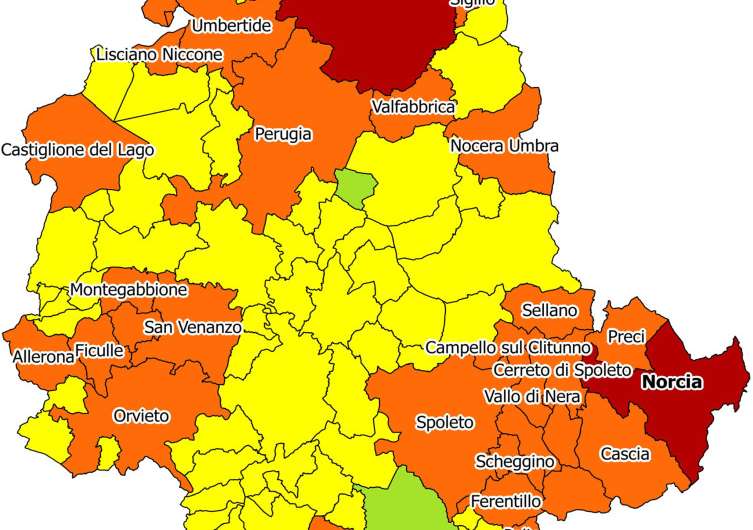Mapping the risk of wolf attacks on livestock in central Italy

The Apennine's areas in the Umbria region of central Italy, in particular Gubbio and Norcia, are at the greatest risk of wolf attacks on livestock farms, according to new research from the University of Portsmouth.
An increasing wolf population has caused worries and protests from local communities, alarmed at possible predation against domestic livestock and the economic impact on their livelihoods.
Using a new risk classification method, the study highlights that a high number of municipalities are at risk. Understanding the risk of wolf attacks on livestock will allow authorities and landowners to properly manage and prevent any potential human-wolf conflict and provide adequate damages for lost livestock.
Lead author of the study, Professor Alessio Ishizaka from the University of Portsmouth's Centre for Operational Research and Logistics (CORL), said: "The design of effective conservation and management plans needs to be informed by an effective decision support system. Our study shows the hotspots that are at risk, which can help the local government in planning conflict mitigation strategies. The local government should focus their efforts and resources on these hotspots when implementing methods to control the wolf."
The study used AHPSort II, a new multi-criteria sorting method for organising and analysing complex decisions, based on the analytic hierarchy process (AHP). This method structures a decision into a hierarchy of criteria and alternatives that are evaluated and then converted into a numerical value for each decision outcome, which allows a straightforward comparison of the various courses of action.
Five criteria were selected – Number of predated animals; Presence of wolves; Number of live animals (domestic livestock); Protected areas; and Population density – and were evaluated across 92 municipalities. The results were sorted into four classes, 'low risk', 'medium-low risk', 'medium-high risk, and 'high risk with respect to the risk that wolves will attack livestock farms.
Only two municipalities − Bastia Umbra and Terni − were classified as low risk, mainly because they are high-density housing municipalities, with lower predation events and a low presence of wolves. The medium-low risk class includes the highest number of municipalities, which are generally hilly and low land. The predation events and the reported presence of wolves are generally quite low and the absence of protected areas also lowering the risk.
The municipalities showing high and medium-high risk already have a high incidence of predated sheep and goats and also a high reported presence of wolves. In the case of these municipalities, the presence of protected areas or their proximity to such areas, create 'shelter zones' for wolves. These municipalities are situated in the mountainous areas of the region, where the availability of wild game is high and the population density is low.
Due to the large number of municipalities that were classified, the study required the development of the new sorting technique AHPSort II. Professor Ishizaka said: "This new sorting method is based on AHP and therefore retains its advantages, while removing the problem of the high number of comparisons. Our case study would have required 37.674 pairwise comparisons using the AHP method, whereas using AHPSort it requires 2.511 comparisons and AHPSort II only 515.
"It is worth noting that the developed method is sufficiently generic to be used in other regions and also in any application area to support decision-making. Due to the increase in big data sets, it is believed that its usage will increase rapidly."
More information: Francesco Miccoli et al. Sorting municipalities in Umbria according to the risk of wolf attacks with AHPSort II, Ecological Indicators (2017). DOI: 10.1016/j.ecolind.2016.10.034
Provided by University of Portsmouth
















